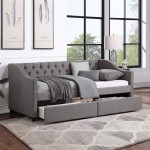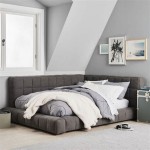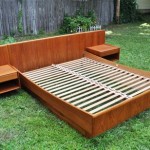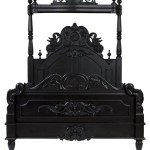Is a Twin Comforter Too Big for a Toddler Bed?
Parents transitioning their toddlers from cribs to toddler beds often encounter numerous questions regarding appropriate bedding. One common query revolves around comforter sizing. While twin comforters are readily available and often match appealing sheet sets, their suitability for toddler beds requires careful consideration.
Toddler beds are smaller than standard twin beds. Dimensions vary slightly between manufacturers, but generally, toddler beds measure approximately 52 inches long and 28 inches wide. Standard twin beds, on the other hand, measure approximately 75 inches long and 39 inches wide. This size difference is significant and directly impacts the fit of a twin-sized comforter.
A twin comforter designed for a twin bed will undoubtedly be oversized for a toddler bed. The excess fabric can present several potential issues. Firstly, it can create a tripping hazard. Toddlers are still developing their coordination, and a large, bunched comforter at the foot of the bed can increase the risk of falls, particularly during nighttime bathroom trips.
Secondly, excess comforter fabric can pose a suffocation risk, although this is less of a concern with modern, lightweight comforters than with older, heavier styles. However, a large comforter can still bunch up around a toddler's face, potentially hindering breathing. While rare, the risks are worth acknowledging. Parents employing any comforter on a toddler bed should prioritize lightweight, breathable materials and ensure the comforter is tucked in securely on the sides and foot of the bed, leaving adequate space around the toddler's head.
Thirdly, using a twin comforter on a toddler bed can be inconvenient from a practical standpoint. The excess fabric can be difficult to manage, bunching up and requiring frequent readjustment. It can also make it challenging to make the bed neatly, adding to the daily workload for parents.
Alternatively, toddler-sized comforters are specifically designed to fit toddler beds. These comforters typically measure approximately 42 inches wide and 58 inches long. This smaller size provides a better fit, reducing the risks associated with excess fabric and simplifying bed-making. The smaller size also often contributes to a more aesthetically pleasing and age-appropriate bedroom environment.
Beyond simply size, fabric and filling are also critical considerations. Toddlers can be prone to overheating, so breathable materials are essential. Natural fibers like cotton are often preferred for their breathability and hypoallergenic properties. Likewise, a lightweight fill, such as down alternative, is recommended over heavier fillings.
Another factor influencing comforter choice is the toddler's sleep habits. Active sleepers who frequently move around during the night might find a larger comforter more disruptive. Conversely, a smaller, snug-fitting comforter might provide a greater sense of security for toddlers who prefer a more contained sleeping environment.
Cost can also be a consideration. Twin comforters, due to their wider availability, can sometimes be less expensive than toddler-sized counterparts. However, considering the potential safety and practical benefits of a properly sized comforter, the investment in a toddler-sized option is often worthwhile.
While there is no definitive right or wrong answer to the question of twin comforter suitability for toddler beds, careful consideration of the potential drawbacks is necessary. The increased risk of tripping, the potential suffocation hazard, and the practical inconvenience associated with excess fabric all point towards toddler-sized comforters as a more suitable choice.
Furthermore, investing in a toddler-sized comforter allows for greater coordination with other toddler bedding items, such as fitted sheets and pillowcases. This creates a more cohesive and visually appealing bedroom aesthetic tailored to the child's developmental stage.
Ultimately, the decision rests with the parents or caregivers. A thorough assessment of the toddler's individual needs, sleep habits, and the specific dimensions of the toddler bed will inform the best choice. Prioritizing safety and practicality will lead to a comfortable and secure sleep environment for the toddler.
Consulting online resources, parenting forums, and product reviews can provide valuable insights from other parents who have navigated the transition to a toddler bed. Manufacturers' websites often provide detailed sizing information for both comforters and beds, facilitating informed purchasing decisions.
Additionally, considering the longevity of the bedding is worthwhile. While a twin comforter might seem like a more versatile long-term investment, a toddler-sized comforter provides a more appropriate fit and a safer sleep environment during this specific developmental stage. As the child grows, transitioning to a twin bed and corresponding bedding will be necessary.

Toddler Bed Vs Twin Mama S Organized Chaos

When To Transition From Toddler Bed Twin 3 Easy Signs

Transitioning Your Toddler From Crib To Bed 2024 Lucie S List

Toddler Bed Vs Twin What Do You Need Naturepedic

Toddler Bed Vs Twin What Do You Need Naturepedic

Ultimate Guide To The Toddler Bed Transition Taking Cara Babies

Twin Vs Full Mattress Size Guide Saatva

Toddler Bed Vs Twin Pros Cons And How To Choose

Toddler Bed Vs Twin What Do You Need Naturepedic

Twin Vs Full Bed Which Is Your Best Choice Parachute Blog
Related Posts







